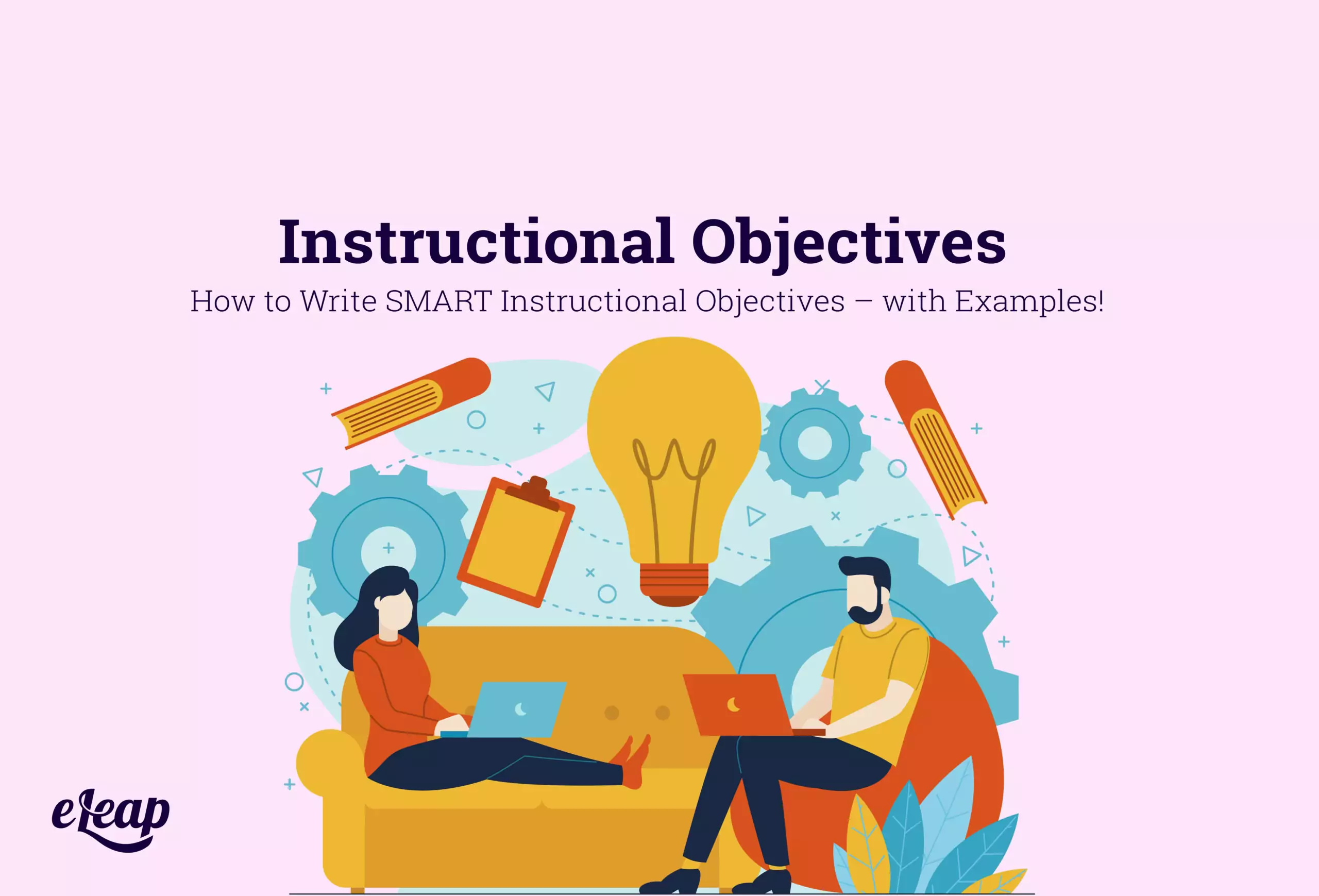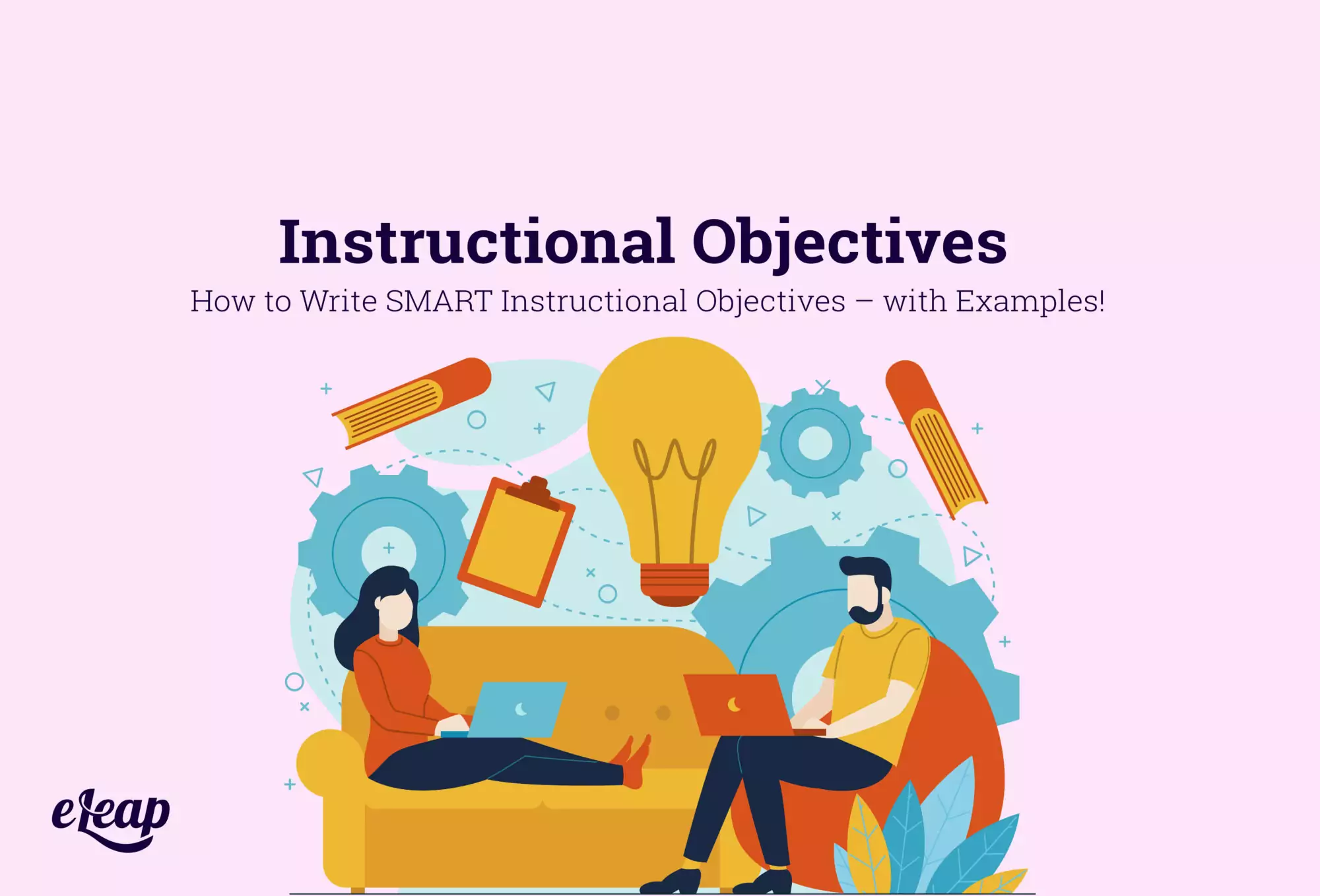Instructional Objectives
How to Write SMART Instructional Objectives – with Examples!

Instructional objectives are the goals you set for your employee training programs. But there’s more to writing clear objectives than just making a list of what you want the program to cover. To help you develop the courses you’ll need to boost employee growth, start by writing SMART instructional objectives.

Why Do You Need Instructional Objectives?
Before you write your objectives, consider why you need them in the first place.
If you create a well-written objective, the training program has a much higher chance of success. Employees will learn to use the skills you’re teaching and apply them in the field right away. But if you don’t have objectives in place, it’s easy to become lost in the weeds. This wastes time and money and doesn’t help you accomplish your goals.
What is a SMART Objective?
You’ve probably heard of the SMART framework for setting goals. This is a valuable technique for double-checking that your goals are going to be successful.
SMART stands for:
- Specific
- Measurable
- Achievable
- Relevant
- Timely
Using this method will keep you on track as you develop your learning objectives.
Specific Learning Objectives
To begin, list everything that you want your employees to learn during their training. Use unambiguous, direct language that explains precisely what they should accomplish when they are done learning.
Try to use action verbs rather than long sentences. At the end of the training, do you want your employees to understand a new concept, or do you want them to apply the new concept during their daily work? Using verbs explains very clearly what the goal is for this training.
Measurable Learning Objectives
The next part of writing great objectives is to determine how success will be measured. There should be some observable action connected to this training program. For example, you can include a test at the end of the training program and require employees to pass with a certain percentage of accuracy. This can be one way to measure the success of the training.
Another option is to measure a reduction of behavior. Let’s say that the training you are offering is on a safety matter. After the training is given, track how many instances of safety violations occur in the next week. If the number is fewer than before, you may consider the training successful.
Achievable Learning Objectives
While studies have shown that employees like to be challenged in their roles, it’s essential that education be kept to an achievable level. No one likes to feel unintelligent. Be sure that your team is given the time and resources they need to complete the training, and don’t expect them to become experts after just one course. Check that the education offered meets the employees at their current level of understanding and that you offer different types of education to allow for accessibility to all learners.
Relevant Learning Objectives
If the material you want to teach doesn’t apply to the team’s daily tasks, they will probably not feel motivated to complete it. Training needs to have some meaning to the employee, or it will feel like a waste of their time and efforts. Be sure that your objective explains why this training is essential and how employees will apply the knowledge in their roles.
Timely Learning Objectives
Finally, consider immediacy when choosing your training materials. What do your employees need to know right now? They will be more motivated to learn something they can use tomorrow instead of next year. Materials will be forgotten if they aren’t applied right away, and the sense of urgency created by the need to know is vital for motivation.
Examples of Great Learning Objectives
With the five elements to writing SMART objectives, you can get started right away. Here are some examples of well-written learning objectives that use these characteristics.
- After the Microsoft Excel course, employees will be able to create a financial spreadsheet used to conduct monthly financial analyses.
- After attending this PR training event, employees will establish a list of 10 relevant professional contacts in the industry.
- After shadowing a relevant mentor, employees will be able to summarize the editorial process of the company’s online journal.
As you can see, each learning objective offers a specific verb (create, establish, summarize) that is given context that applies to the employee’s daily role on the team. Each objective explains precisely what action is expected for measurability, and each is necessary for the immediate future of the employee’s job.
Another critical point to understand is that learning objectives don’t need to be long. If you can summarize the important goal of the training exercise in a single sentence, that is even better.
Bonus: Consider How Employees Will Demonstrate Their Knowledge
Using the SMART framework is a great way to get started with practical learning objectives. But if you want to improve your goals even more, consider a characteristic of academic learning goals. When teachers determine their goals for students, one thing they include is how the student will demonstrate their newfound knowledge.
In the workplace, this may mean having a manager review the work that an employee does after going through a course to ensure the new skills were applied. It may mean discussing new ideas with a mentor or even giving a presentation to team members.
If you want to add this extra layer of accountability and reinforcement to your learning objectives, consider writing something like this:
“After the Microsoft Excel course, employees will create a financial spreadsheet to be used in monthly financial analyses and share this spreadsheet with the senior accounting team for feedback.”
This is an excellent way to put the finishing touch on your SMART learning objectives.
Looking Ahead with Learning Objectives
Now that you have well-written learning objectives, you can consider how you will use them to shape your training program. You can use these goals to choose the suitable LMS or build the right internal training modules for every role in your company.